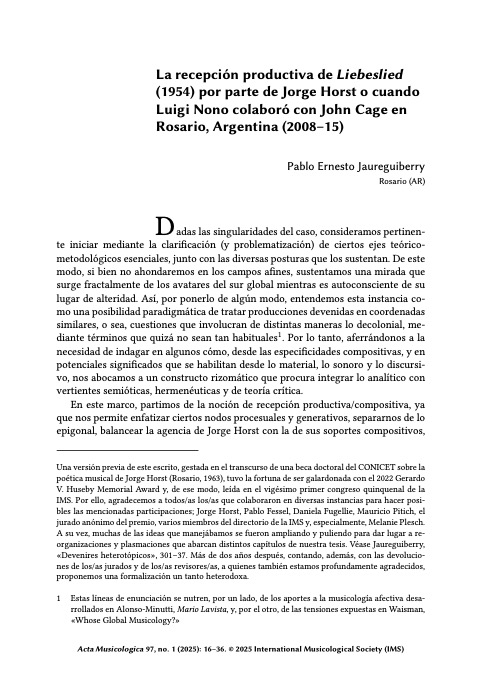Abstract
Jorge Horst (born in 1963 in Rosario, Argentina) has occupied a prominent place in Argentina’s contemporary music scene since the late 1980s. His prolific oeuvre explores diverse possibilities that often involve intertextuality/transtextuality, indeterminacy, cryptology, and numerology. In this connection, Horst’s productive reception of Luigi Nono’s and John Cage’s poetics plays a key role, as illustrated by a group of seven works composed between 2008 and 2015, in which recursive aspects of indeterminacy provide the context for reworking a twelve-tone row derived from Nono’s Liebeslied (1954). Furthermore, his intempestivos (2008) and Escarpa (2014) are based on sequences that alternate this row with another that is paradigmatic of Nono’s serialism, the all-interval row that he used repeatedly beginning in the mid-1950s. In this article, I analyze the manner in which Horst both appropriates and builds upon material from Liebeslied, adapting it within a framework of indeterminacy that gives rise to a heterotopia characteristic of the aesthetics developed in his later compositions. This kind of strategy exemplifies his poetics, where heterogeneous materials and techniques are recombined in coherent yet ambivalent ways. At the conclusion, I propose that examination of such a stylistic approach might help to overcome some persistent historiographical discourses on Argentine art music.
